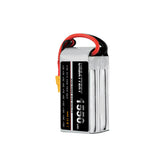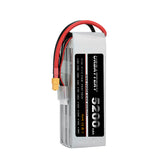What is RC LiPo Batteries?
🔋 Understanding RC LiPo Batteries: What Every Pilot Should Know
LiPo batteries, or Lithium Polymer batteries, are the power source of choice in the world of RC models and drones. Compared to older nickel-cadmium (NiCd) or nickel-metal hydride (NiMH) batteries, LiPo batteries are much lighter and offer longer flight times, making them ideal for aerial applications. Plus, they’re generally safer when used correctly.
🚀 High Discharge Rates for Demanding Applications
LiPo batteries stand out for their high discharge rates. While a smartphone battery might discharge at less than 1A, a LiPo battery can handle several hundred amps under load—perfect for drones in aggressive flight modes.
🔌 Connectors: From T-Plug to XT60
Most RC drone batteries use a T-style connector ("T-plug"). However, as discharge capacity and ESC power handling improve, XT60 connectors have become popular. They can support 50A to 120A depending on the materials used, making them ideal for high-performance drones.
⚙️ Battery Ratings Explained: S, mAh, and C
- S (Series): 3S = 3 battery cells in series. Each cell is 3.7V, so a 3S battery is 11.1V.
- mAh (Milliamp Hours): A 2200mAh battery can theoretically output 2.2A for 1 hour.
- C Rating: Max current = Capacity × C. For example, 2200mAh × 20C = 44A. Exceeding this shortens battery life.
Example: A 3S/1100mAh/25C battery = 1.1 × 25 = 27.5A maximum continuous discharge.
✅ Final Tips
- Use higher C-rated batteries for aggressive flying.
- Never exceed the C-rating's discharge current.
- Use XT60 connectors for high-current applications.





